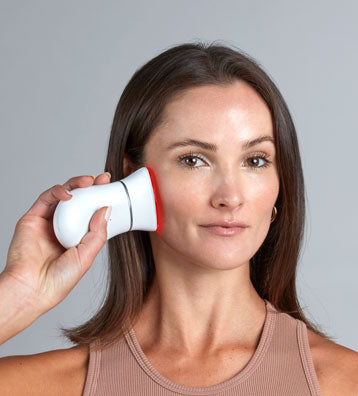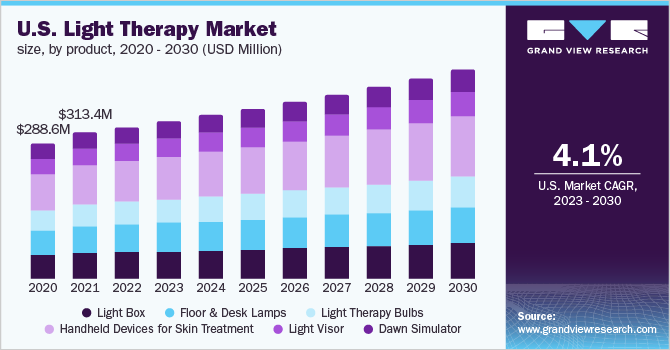Harnessing the Potential: Photobiomodulation's Role in Tissue Regrowth
Wiki Article
Opening the Potential of Photobiomodulation: A Promising Technique for Therapeutic Intervention
Are you interested regarding the capacity of photobiomodulation for healing intervention? By targeting details cellular procedures, photobiomodulation has actually shown prospective in speeding up injury healing, lowering pain, and promoting cells regrowth. In this intro, we will explore the devices of activity, applications in medication, and the existing proof sustaining the efficacy of photobiomodulation.Comprehending Photobiomodulation
To comprehend photobiomodulation, you need to grasp the principle of just how light treatment can straight impact cellular procedures in your body. Photobiomodulation, additionally called low-level light therapy, is a non-invasive therapy that uses details wavelengths of light to boost biochemical responses in your cells. When exposed to these light wavelengths, your cells soak up the power and transform it right into cellular energy, referred to as adenosine triphosphate (ATP) This increase in ATP manufacturing causes a cascade of mobile reactions, consisting of enhanced metabolism, boosted flow, and increased manufacturing of collagen and other healthy proteins.The therapeutic impacts of photobiomodulation are far-reaching and have actually been studied thoroughly in various medical areas. It has shown promising outcomes in promoting tissue fixing and regeneration, minimizing inflammation, soothing pain, and improving wound recovery. In addition, photobiomodulation has been discovered to have a favorable impact on neurological conditions, such as stressful brain injury and stroke, by boosting neural task and promoting neuroplasticity.
Unlike other therapies, photobiomodulation does not produce any warmth or create cells damage. It is essential to note that photobiomodulation should be carried out by skilled experts or according to the supplier's guidelines to make sure optimal results and safety and security.

Systems of Activity
In recognizing the systems of action, you will certainly find how photobiomodulation directly affects mobile processes via certain biochemical reactions. When light is related to the body, it is taken in by chromophores, such as cytochrome c oxidase and flavins, which are present in the mitochondria. This absorption leads to a waterfall of occasions that eventually result in cellular changes.Photobiomodulation boosts the task of cytochrome c oxidase, a vital enzyme in the mitochondria that is involved in the electron transport chain. As a result, cellular metabolic rate is enhanced, advertising tissue repair work and regrowth.
Furthermore, photobiomodulation has actually been revealed to modulate cellular signaling pathways. It triggers various development factors and indicating particles, such as nitric oxide and reactive oxygen species, which play important functions in procedures like angiogenesis, cell, and inflammation expansion. These signaling paths add to the therapeutic impacts of photobiomodulation, advertising cells recovery and decreasing discomfort and inflammation.
Applications in Medication
Explore the varied applications of photobiomodulation in medication. Photobiomodulation, also referred to as low-level light therapy, is a non-invasive treatment that utilizes light to advertise and promote mobile procedures recovery. In medication, this technique has actually revealed encouraging outcomes throughout numerous areas.Among the key applications of photobiomodulation is in discomfort management. pbm light therapy. It has been used to minimize both severe and chronic pain, including bone and joint problems, neuropathic discomfort, and post-operative discomfort. By targeting the damaged location with details wavelengths of light, photobiomodulation can lower swelling, promote tissue repair service, and supply alleviation
Furthermore, photobiomodulation has shown possible in injury recovery. It can increase the healing procedure by i was reading this boosting cell spreading, promoting angiogenesis, and decreasing scar cells development. This has considerable implications in the therapy of chronic injuries, such as diabetic person ulcers and pressure sores.
In dermatology, photobiomodulation has actually been used for its regenerative and anti-inflammatory impacts. It can boost the appearance of marks, decrease acne lesions, and boost hair growth in conditions like androgenetic alopecia.
Furthermore, photobiomodulation has actually revealed assurance in neurorehabilitation. It can improve cognitive function, improve electric motor healing, and aid in the treatment of neurodegenerative diseases like Alzheimer's and Parkinson's.
Clinical Proof and Research Study Findings

In the area of bone and joint conditions, photobiomodulation has actually been found to minimize pain and inflammation, boost array of movement, and accelerate tissue fixing. Studies have actually shown its efficacy in treating problems such as osteo arthritis, tendinopathies, and muscle mass pressures. Additionally, photobiomodulation has revealed favorable effects on wound recovery by advertising collagen synthesis, fibroblast, and angiogenesis expansion. This makes it a beneficial tool in the administration of persistent injuries, diabetic person abscess, and medical incisions.
Additionally, study has actually shown that photobiomodulation can have neuroprotective and neuroregenerative effects. It has been located to boost cognitive feature, minimize neuroinflammation, and improve neuronal survival and synaptic plasticity. This has crucial ramifications for the treatment of neurological conditions such as Alzheimer's disease, Parkinson's condition, and stroke.
Future Instructions and Potential Obstacles
Moving onward, it is essential to consider the future instructions and potential difficulties surrounding the usage of photobiomodulation as a therapeutic intervention. Currently, there is no agreement on the ideal wavelength, intensity, period, and regularity of photobiomodulation therapy.One more vital future instructions is the development of portable and affordable photobiomodulation tools. While present tools are efficient, they are often large, expensive, and need specialist supervision - pbm light therapy. The growth of navigate here easy to use and economical tools would substantially enhance availability to this treatment, allowing more people to gain from its potential restorative impacts
In addition, future research ought to concentrate on clarifying the mechanisms underlying photobiomodulation. Despite its growing popularity, the precise devices by which photobiomodulation exerts its therapeutic impacts are not completely recognized. Recognizing these mechanisms would not only enhance our understanding of the therapy however likewise help in the growth of even more targeted and reliable treatments.
Nonetheless, there are also potential challenges that need to be addressed. pbm therapy. These consist of the requirement for standard procedures, the demand for well-designed scientific trials with larger sample sizes, and the need for lasting follow-up researches. Governing and security considerations must be taken right into account to make certain the effective and secure usage of photobiomodulation in medical practice.
Verdict
In verdict, photobiomodulation holds wonderful pledge as a restorative intervention in medication. With continuous studies and improvements in this area, photobiomodulation has the potential to unlock brand-new opportunities for boosting client results.Are you interested about the capacity of photobiomodulation for healing treatment? By targeting specific cellular processes, photobiomodulation has shown prospective in increasing injury recovery, reducing pain, and promoting tissue regeneration.Additionally, photobiomodulation has shown prospective in wound healing.Moving ahead, it is crucial to take into consideration the possible obstacles and future instructions bordering the usage of photobiomodulation as a healing treatment. With continuous research studies and improvements in this area, photobiomodulation has the prospective to unlock new possibilities for improving person go to these guys end results.
Report this wiki page